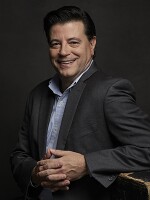In a press conference at the legislative office building in Hartford on Monday, U.S. Senator Richard Blumenthal called on energy drink companies to stop marketing their product to children through toys bearing the energy drink's logo.
Senator Blumenthal has gone after energy drinks in the past, most recently last summer, where he got promises from the manufacturers of energy drinks to stop marketing their product to children. "The energy drink companies themselves have committed to me, and the commerce committee of the Senate, that they would not market these products to children under the age of 12," said Blumenthal.
And yet, Blumenthal brought along two examples of toys that can be found on the shelves this holiday season that seemingly renege on that promise: a radio-controlled boat that is completely covered with the Rockstar Energy Drink logo, and the Red Bull energy drink RC helicopter. Both toys are marketed for children ages eight and up.
Jennifer Harris, Director of Marketing Initiatives for Yale University's Rudd Center for Food Policy and Obesity, said this type of marketing is very effective. "While sales of most other beverage categorizes have declined, energy drink sales increased 19 percent last year," she said. "Kids and teens are easy targets for marketing these products that seem cool, daring, and grown up."
Blumenthal said these drinks, which contain high levels of caffeine, pose a health risk for children. "In a short four years," he said, "emergency room visits doubled as a result of those energy drinks. A large proportion of those visits were by children."
Blumenthal and three colleagues sent letters to Red Bull and Rockstar to find out why they are selling these toys, and how they plan to stop this type of marketing in the future.






